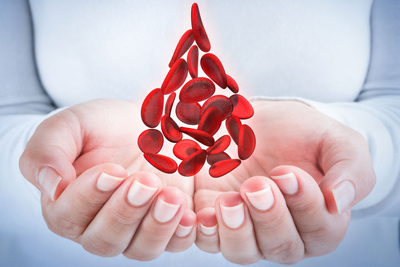
The importance of lipidomics


Cell membrane lipidomics: one of the most current and important tools for the molecular health
In recent decades the disciplines related to health and nutrition, thanks to molecular techniques, have made giant leaps forward. Lipidomics is one of them; it is one of the “-omics” disciplines (for example proteomics, genomics) that deal dynamically with the molecules that exist in living organisms.
Lipidomics studies molecules called “lipids”, which contain “fatty acids”, simply called “fats”. These elements are the fundamental constituents of the cell membrane, the envelope that wraps all the cells of our body, and are specific in quantity and quality for each tissue. Cells do not exist without the cell membrane but without fats the cell membrane does not exist. With this premise it is essential to know which and how many fats make up the membranes of our cells, in order to achieve and / or maintain their balance, a necessary condition to allow the efficient functioning of the whole organism.
Fatty acids of the cell membrane
In addition to the circulating fats (triglycerides are the most known), there are fats called phospholipids that are able to combine spontaneously to form the cell membrane. Each phospholipid then has specific structure and functions according to the fats present. The science of fats (lipidomics) dedicated to the cell membrane studies its structure, functions and variations that come about in various physiological and pathological situations.
There are two types of fat molecules:
– saturated fats, characterized by a linear, rigid structure, and can be prepared by the body (therefore be careful not to consume too many with the diet!);
– unsaturated fats, with a characteristic folded shape and in turn divided into two groups: monounsaturated and polyunsaturated (the latter are “the famous Omega”). Monounsaturated fats can also be prepared by the body while polyunsaturated fats are essential fatty acids, that is, Omega-6 and Omega-3 must necessarily be intake with food.
Fats are contained in foods (to find out more click here) as well as they are processed by the metabolism.
The fat composition is therefore a result of how lifestyle, diet and metabolic transformations are combined.
Cell membrane lipidomic analysis
Can we know how many fats and what type we eat with food? And especially if our body has deficiencies or excesses of fat?
 Lipidomics has been dedicated to the development of the analysis of the cell membrane; an instrument that determines a real molecular profile (molecular fingerprint) of the individual. A cell representative of all the others present in the body or of the tissues that make up all the organs is required; the scientifically validated cell is the mature red blood cell. From numerous scientific evidences, the red blood cell membrane, having an average life of four months within the body districts, when it reaches 3 months of life is the suitable matrix for giving information on the general state of the individual.
Lipidomics has been dedicated to the development of the analysis of the cell membrane; an instrument that determines a real molecular profile (molecular fingerprint) of the individual. A cell representative of all the others present in the body or of the tissues that make up all the organs is required; the scientifically validated cell is the mature red blood cell. From numerous scientific evidences, the red blood cell membrane, having an average life of four months within the body districts, when it reaches 3 months of life is the suitable matrix for giving information on the general state of the individual.
The lipidomic protocol of Lipinutragen
Thanks to the LNG-R1 robotic equipment, unique Italian excellence in the world owned by Lipinutragen, supported in its realization by the CNR Researchers founding members of the Company, it is possible to isolate the reporter cell, meaning the mature red blood cell, without manual intervention. Starting from cell selection (mature erythrocyte), from a blood sample, and by performing operations of separation and chemical transformations, it is possible to obtain the lipidomic profile, that is, the composition in membrane fatty acids. To date, our laboratory is the only one in the world to carry out this sampling and processing process; the result allows the membrane profile to be used as a reliable and repeatable clinical data.
To learn more, we recommend reading:
-> the short interview with Dr. Carla Ferreri >> https://www.lipinutragen.it/cos-e-analisi-lipidomica/
-> the specific article on cell membrane lipidomic analysis >> https://www.lipinutragen.it/en/lipidomic-membrane-analysis/
Article edited by the Lipinutragen Editorial Board
Photo: 123RF Archivio Fotografico: 35507898 ©Romolo Tavani /123rf.com | 131892302 ©normaals /123rf.com
- On 31 January 2020



